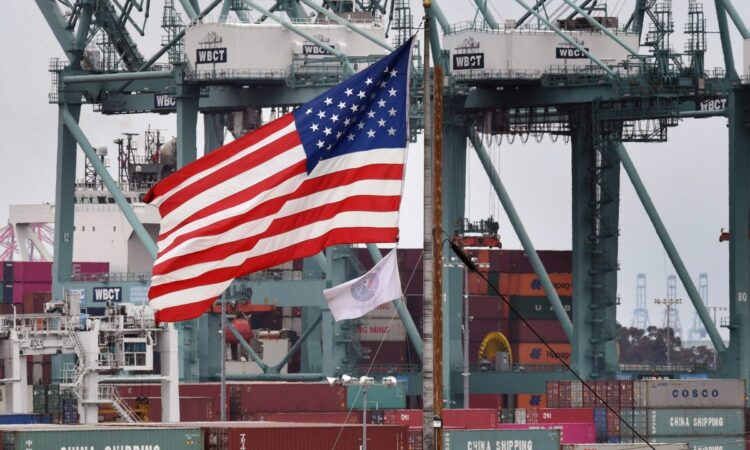
Last year, the United States exported $258.2 billion worth of goods and services and imported $320 billion, according to the Bureau of Economic Analysis. But despite those big numbers, the U.S. economy is far less trade-oriented than many other countries around the world.
A World Bank analysis using data from 2022 found the U.S. trade-to-GDP ratio — the value of imports and exports as a percentage of the country’s gross domestic product — was 27%. For comparison, the global average is 63%.
“It gives you a kind of rough and ready sense of where a particular place stands in comparison to others,” said Peter Coclanis, director of the Global Research Institute at the University of North Carolina at Chapel Hill, who wrote about the U.S. trade-to-GDP ratio for The Conversation. “Now, the interpretation is much more complicated, however.”
Some places with high trade ratios, like Singapore and Hong Kong, serve as international trade hubs. Their small size relative to the amount of international goods moving through them means that trade makes up a high percentage of their GDP.
“The story that it tells is one of composition,” said Nancy Chau, a professor of economics at Cornell University.
The U.S., while importing and exporting hundreds of billions of dollars’ worth of goods and services ever year, also produces a lot of stuff that’s consumed domestically. Compare that to a place like Hong Kong, where Chau grew up.
“We produce nothing, we’re just a rock,” she said. “So in order to buy anything for consumption, Hong Kong has to import everything.”
The U.S. not only produces a lot of wide-ranging goods and services — including agricultural products, financial services and Hollywood movies — it also has a lot of consumers.
Global trade consultant Sarita Jackson helps businesses figure out how to expand internationally. While plenty of U.S. businesses go through the process of identifying the right markets, learning customs laws and shipping internationally, Jackson said some decide “Eh, OK, maybe I’ll just stick with consumers here in the United States.”
Some countries have low trade ratios because they have high tariff restrictions or don’t produce enough to export abroad. But that’s not the case in the United States.
Despite new tariffs imposed in recent years by President Joe Biden and former President Donald Trump, the U.S. average import tariff is among the lowest in the world.
The U.S. trade ratio is low “not because we are poor or we have necessarily the highest tariffs in the world,” Coclanis at UNC said. “It’s a function in some ways of our strength, and our wealth, and our diversity, and our largeness.”
There’s a lot happening in the world. Through it all, Marketplace is here for you.
You rely on Marketplace to break down the world’s events and tell you how it affects you in a fact-based, approachable way. We rely on your financial support to keep making that possible.
Your donation today powers the independent journalism that you rely on. For just $5/month, you can help sustain Marketplace so we can keep reporting on the things that matter to you.






